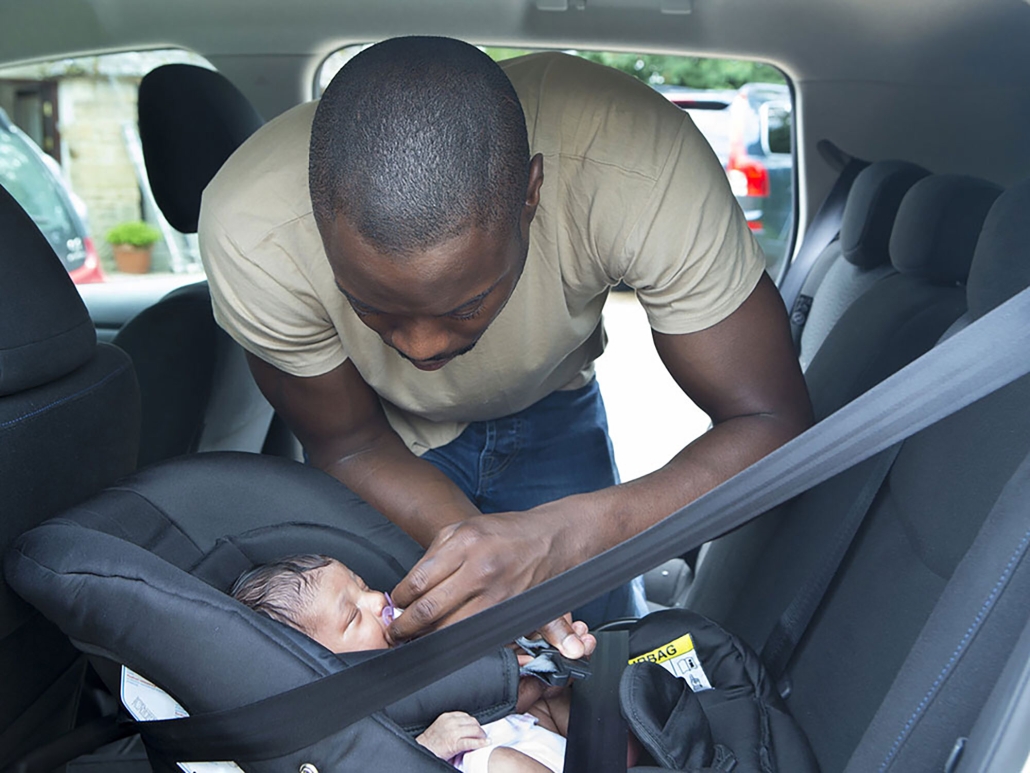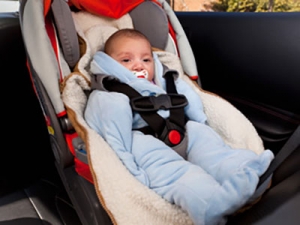SAFE OPERATION
Car Seats
You’ve probably heard about the importance of always using a properly installed car seat when you take your little one out on the road.
But, did you know up to 80 percent of parents aren’t using their car seats correctly?
There are a number of mistakes parents’ make. Many of them are small mistakes but sometimes they can lead to injury even in a minor collision.
Here’s how to get it right
Below is a typical baby car seat, or ‘infant restraint’ as they call it in the trade, with a five-point harness system. Your baby’s hips should be well back in the seat. In cold weather don’t bundle your baby up in snowsuits or buntings or you won’t get a good harness fit at the shoulders and crotch. Instead, use lighter clothing, like an extra sweater or extra pants, and tuck blankets around the baby after he is buckled in.
The shoulder straps should feed through the back of the seat below or just at the baby’s shoulders, not above. The clip that brings the shoulder straps together should be at armpit level.
Harness straps must be flat and snug – straps that are twisted increase the risk of injury in a crash. Tighten the shoulder straps until you can fit just one finger underneath them.
Installing the seat
If you use an infant seat (which many parents find more convenient) you will have to replace it when your baby reaches the weight and height limits stated by the manufacturer. The alternative is to put your baby straight into a convertible seat which can also be used for toddlers. Either way, your baby must ride facing the rear of the car until he reaches one year and weighs at least 10 kg (22 lb).
The safest location for a car seat is the centre of the back seat. Follow the manufacturer’s instructions exactly when installing your seat in the car.
One little problem parents run into is getting the car seat level. That’s because the back seats of cars sit at different angles. If the level is wrong, the baby’s head and neck won’t get the right support or the baby’s head will flop forward. Most infant seats these days come with mechanisms to help you get the level right. Pay attention to this because it’s an important feature. If your infant seat snaps onto a base that stays in the care, make sure the base is levelled at the correct angle when you install it. If your seat doesn’t have a leveler, use a tightly rolled up towel to adjust the angle of the seat.
Lastly, make sure the infant seat handle is out of the way, pushed up to the over the baby’s head behind the seat, or pulled down to the front. Check the instructions for the correct position for your seat. Having the handle in the wrong position can cause injury during a crash.
If you want more information. Here are two places to look:
Transport Canada provides information about car seat use, including recall notices.
Parents.com has a helpful article on seven tips for buying newborn car seats.
Car seat safety outside the car
Here’s a surprising little factoid about car seat safety. An study found that over 8000 American babies are taken to the ER each year because of car seat injuries that happen outside the car! The babies either fall out of the seat (sometimes when it is being carried), or the seat (with them in it) falls off a table of counter. So, if you’re carrying your baby around in the car seat, make sure the baby is still properly fastened in. And if the baby is in the seat, don’t leave it unattended on a high surface.



Car Seats
/in SAFE OPERATION /by ndbadminYou’ve probably heard about the importance of always using a properly installed car seat when you take your little one out on the road.
Safety Tips
/in SAFE OPERATION /by ndbadminYou may have noticed that parents can buy all kinds of baby equipment and gadgets these days.